Vu Nguyen Ha
DT-Aided Resource Management in Spectrum Sharing Integrated Satellite-Terrestrial Networks
Jul 28, 2025Abstract:The integrated satellite-terrestrial networks (ISTNs) through spectrum sharing have emerged as a promising solution to improve spectral efficiency and meet increasing wireless demand. However, this coexistence introduces significant challenges, including inter-system interference (ISI) and the low Earth orbit satellite (LSat) movements. To capture the actual environment for resource management, we propose a time-varying digital twin (DT)-aided framework for ISTNs incorporating 3D map that enables joint optimization of bandwidth (BW) allocation, traffic steering, and resource allocation, and aims to minimize congestion. The problem is formulated as a mixed-integer nonlinear programming (MINLP), addressed through a two-phase algorithm based on successive convex approximation (SCA) and compressed sensing approaches. Numerical results demonstrate the proposed method's superior performance in queue length minimization compared to benchmarks.
Statistical CSI-Based Distributed Precoding Design for OFDM-Cooperative Multi-Satellite Systems
May 12, 2025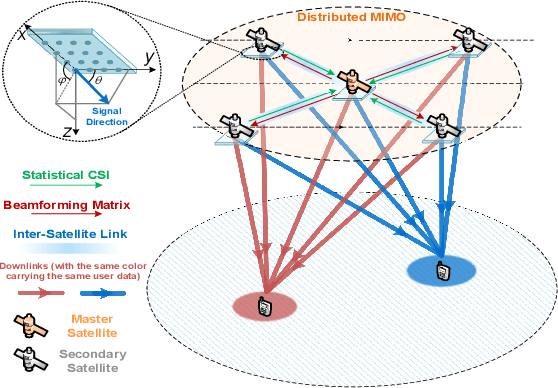
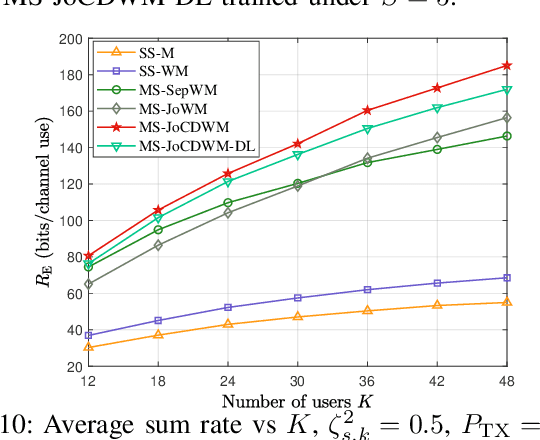
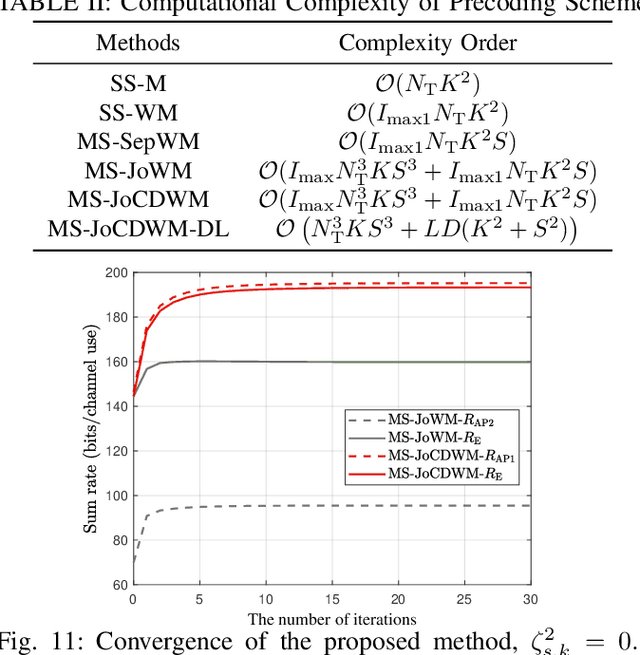
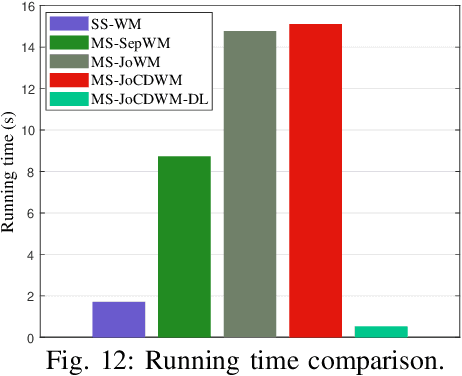
Abstract:This paper investigates the design of distributed precoding for multi-satellite massive MIMO transmissions. We first conduct a detailed analysis of the transceiver model, in which delay and Doppler precompensation is introduced to ensure coherent transmission. In this analysis, we examine the impact of precompensation errors on the transmission model, emphasize the near-independence of inter-satellite interference, and ultimately derive the received signal model. Based on such signal model, we formulate an approximate expected rate maximization problem that considers both statistical channel state information (sCSI) and compensation errors. Unlike conventional approaches that recast such problems as weighted minimum mean square error (WMMSE) minimization, we demonstrate that this transformation fails to maintain equivalence in the considered scenario. To address this, we introduce an equivalent covariance decomposition-based WMMSE (CDWMMSE) formulation derived based on channel covariance matrix decomposition. Taking advantage of the channel characteristics, we develop a low-complexity decomposition method and propose an optimization algorithm. To further reduce computational complexity, we introduce a model-driven scalable deep learning (DL) approach that leverages the equivariance of the mapping from sCSI to the unknown variables in the optimal closed-form solution, enhancing performance through novel dense Transformer network and scaling-invariant loss function design. Simulation results validate the effectiveness and robustness of the proposed method in some practical scenarios. We also demonstrate that the DL approach can adapt to dynamic settings with varying numbers of users and satellites.
GLUSE: Enhanced Channel-Wise Adaptive Gated Linear Units SE for Onboard Satellite Earth Observation Image Classification
Apr 16, 2025Abstract:This study introduces ResNet-GLUSE, a lightweight ResNet variant enhanced with Gated Linear Unit-enhanced Squeeze-and-Excitation (GLUSE), an adaptive channel-wise attention mechanism. By integrating dynamic gating into the traditional SE framework, GLUSE improves feature recalibration while maintaining computational efficiency. Experiments on EuroSAT and PatternNet datasets confirm its effectiveness, achieving exceeding \textbf{94\% and 98\% accuracy}, respectively. While \textbf{MobileViT achieves 99\% accuracy}, ResNet-GLUSE offers \textbf{33x fewer parameters, 27x fewer FLOPs, 33x smaller model size (MB), $\approx$6x lower power consumption (W), and $\approx$3x faster inference time (s)}, making it significantly more efficient for onboard satellite deployment. Furthermore, due to its simplicity, ResNet-GLUSE can be easily mimicked for \textbf{neuromorphic computing}, enabling ultra-low power inference at just \textbf{852.30 mW} on Akida Brainchip. This balance between high accuracy and ultra-low resource consumption establishes ResNet-GLUSE as a practical solution for real-time Earth Observation (EO) tasks. Reproducible codes are available in our shared repository.
A Semantic-Loss Function Modeling Framework With Task-Oriented Machine Learning Perspectives
Mar 12, 2025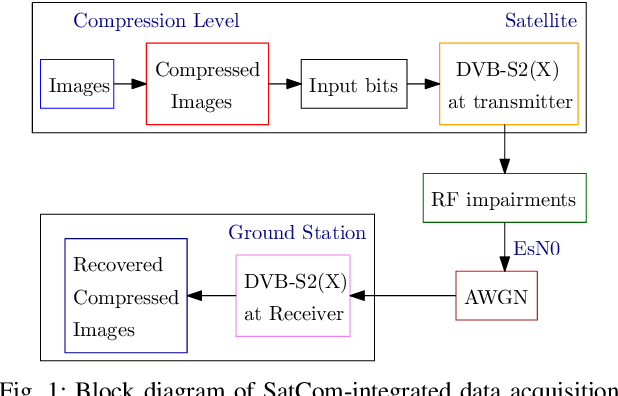
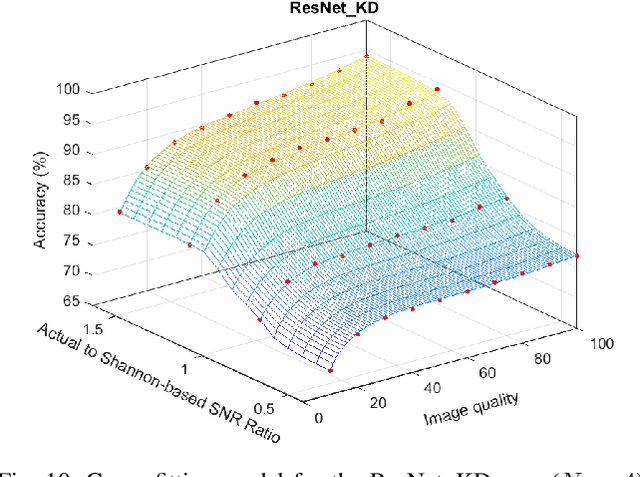
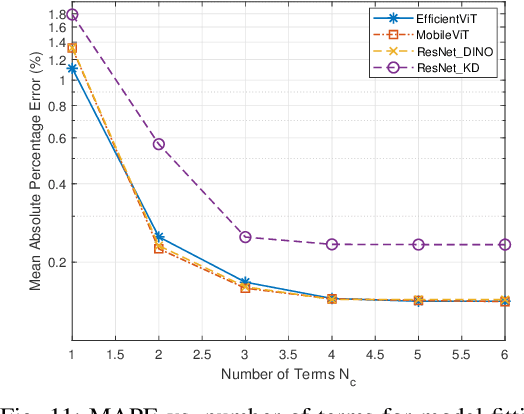
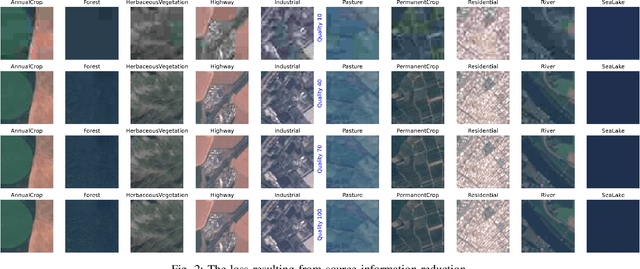
Abstract:The integration of machine learning (ML) has significantly enhanced the capabilities of Earth Observation (EO) systems by enabling the extraction of actionable insights from complex datasets. However, the performance of data-driven EO applications is heavily influenced by the data collection and transmission processes, where limited satellite bandwidth and latency constraints can hinder the full transmission of original data to the receivers. To address this issue, adopting the concepts of Semantic Communication (SC) offers a promising solution by prioritizing the transmission of essential data semantics over raw information. Implementing SC for EO systems requires a thorough understanding of the impact of data processing and communication channel conditions on semantic loss at the processing center. This work proposes a novel data-fitting framework to empirically model the semantic loss using real-world EO datasets and domain-specific insights. The framework quantifies two primary types of semantic loss: (1) source coding loss, assessed via a data quality indicator measuring the impact of processing on raw source data, and (2) transmission loss, evaluated by comparing practical transmission performance against the Shannon limit. Semantic losses are estimated by evaluating the accuracy of EO applications using four task-oriented ML models, EfficientViT, MobileViT, ResNet50-DINO, and ResNet8-KD, on lossy image datasets under varying channel conditions and compression ratios. These results underpin a framework for efficient semantic-loss modeling in bandwidth-constrained EO scenarios, enabling more reliable and effective operations.
Semantic Knowledge Distillation for Onboard Satellite Earth Observation Image Classification
Oct 31, 2024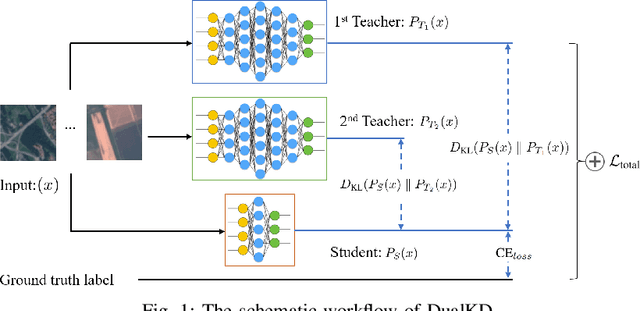
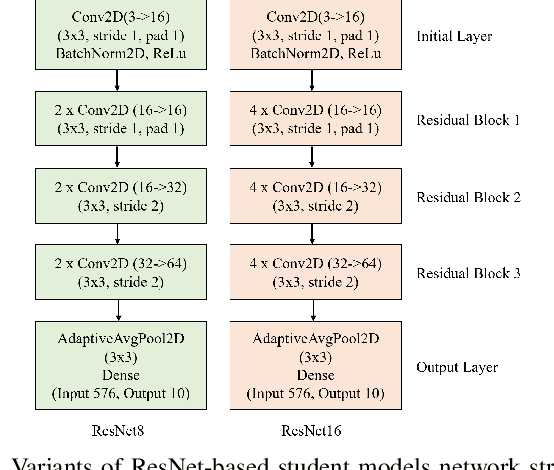
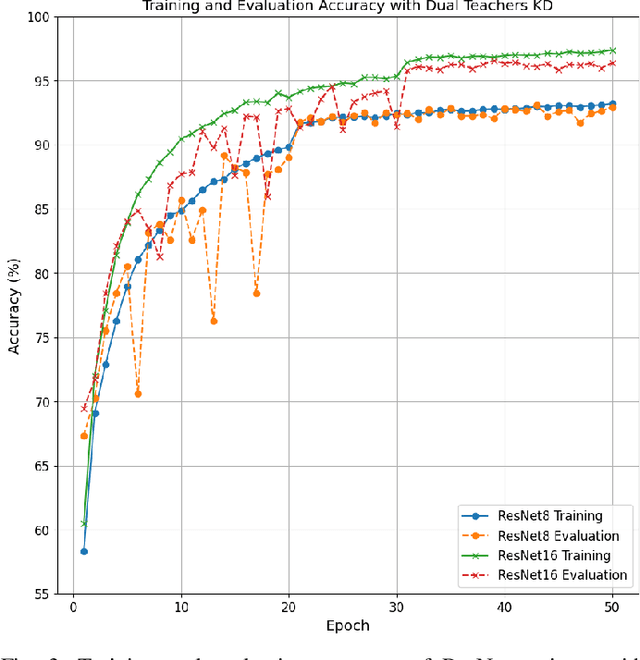
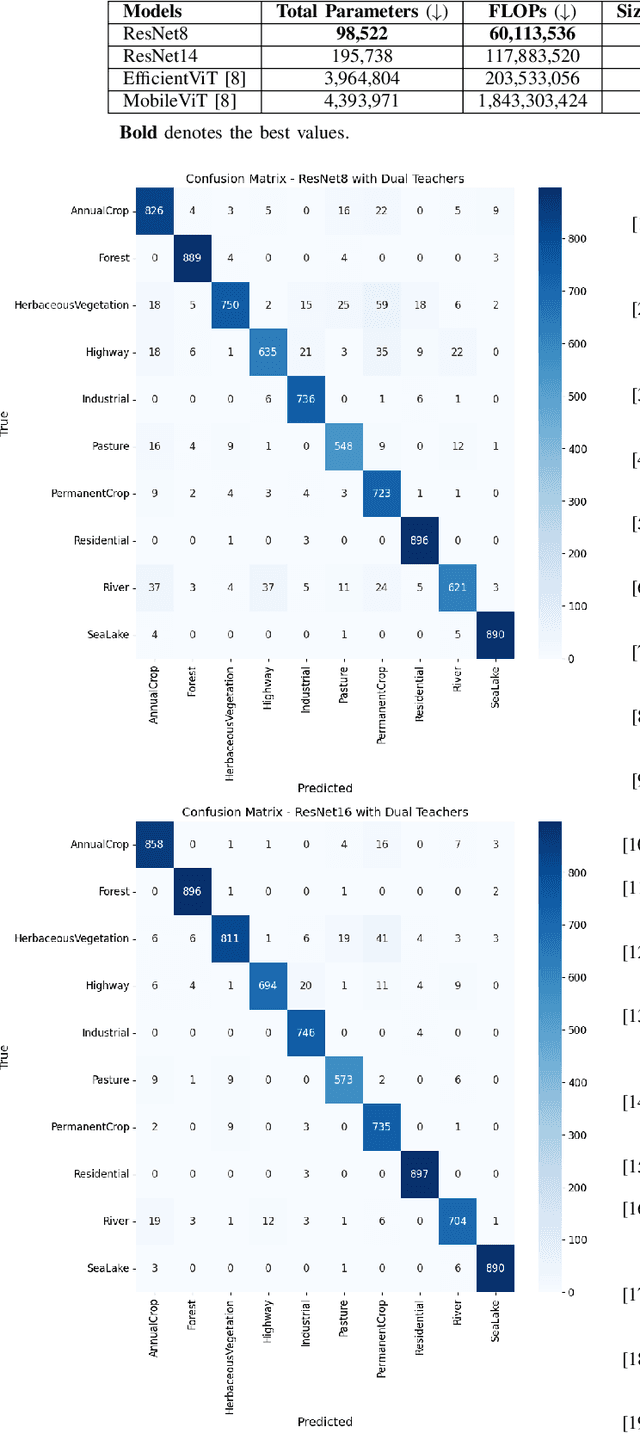
Abstract:This study presents an innovative dynamic weighting knowledge distillation (KD) framework tailored for efficient Earth observation (EO) image classification (IC) in resource-constrained settings. Utilizing EfficientViT and MobileViT as teacher models, this framework enables lightweight student models, particularly ResNet8 and ResNet16, to surpass 90% in accuracy, precision, and recall, adhering to the stringent confidence thresholds necessary for reliable classification tasks. Unlike conventional KD methods that rely on static weight distribution, our adaptive weighting mechanism responds to each teacher model's confidence, allowing student models to prioritize more credible sources of knowledge dynamically. Remarkably, ResNet8 delivers substantial efficiency gains, achieving a 97.5% reduction in parameters, a 96.7% decrease in FLOPs, an 86.2% cut in power consumption, and a 63.5% increase in inference speed over MobileViT. This significant optimization of complexity and resource demands establishes ResNet8 as an optimal candidate for EO tasks, combining robust performance with feasibility in deployment. The confidence-based, adaptable KD approach underscores the potential of dynamic distillation strategies to yield high-performing, resource-efficient models tailored for satellite-based EO applications. The reproducible code is accessible on our GitHub repository.
On-board Satellite Image Classification for Earth Observation: A Comparative Study of Pre-Trained Vision Transformer Models
Sep 05, 2024



Abstract:Remote sensing image classification is a critical component of Earth observation (EO) systems, traditionally dominated by convolutional neural networks (CNNs) and other deep learning techniques. However, the advent of Transformer-based architectures and large-scale pre-trained models has significantly shifted, offering enhanced performance and efficiency. This study focuses on identifying the most effective pre-trained model for land use classification in onboard satellite processing, emphasizing achieving high accuracy, computational efficiency, and robustness against noisy data conditions commonly encountered during satellite-based inference. Through extensive experimentation, we compared traditional CNN-based models, ResNet-based models, and various pre-trained vision Transformer models. Our findings demonstrate that pre-trained Transformer models, particularly MobileViTV2 and EfficientViT-M2, outperform models trained from scratch in accuracy and efficiency. These models achieve high performance with reduced computational requirements and exhibit greater resilience during inference under noisy conditions. While MobileViTV2 excelled on clean validation data, EfficientViT-M2 proved more robust when handling noise, making it the most suitable model for onboard satellite Earth observation tasks. In conclusion, EfficientViT-M2 is the optimal choice for reliable and efficient remote sensing image classification in satellite operations, achieving 98.76\% accuracy, precision, and recall. Specifically, EfficientViT-M2 delivered the highest performance across all metrics, excelled in training efficiency (1,000s) and inference time (10s), and demonstrated greater robustness (overall robustness score at 0.79).
Seamless 5G Automotive Connectivity with Integrated Satellite Terrestrial Networks in C-Band
Aug 27, 2024Abstract:This paper examines integrated satellite-terrestrial networks (ISTNs) in urban environments, where terrestrial networks (TNs) and non-terrestrial networks (NTNs) share the same frequency band in the C-band which is considered the promising band for both systems. The dynamic issues in ISTNs, arising from the movement of low Earth orbit satellites (LEOSats) and the mobility of users (UEs), are addressed. The goal is to maximize the sum rate by optimizing link selection for UEs over time. To tackle this challenge, an efficient iterative algorithm is developed. Simulations using a realistic 3D map provide valuable insights into the impact of urban environments on ISTNs and also demonstrates the effectiveness of the proposed algorithm.
The Impact of LoRA Adapters for LLMs on Clinical NLP Classification Under Data Limitations
Jul 27, 2024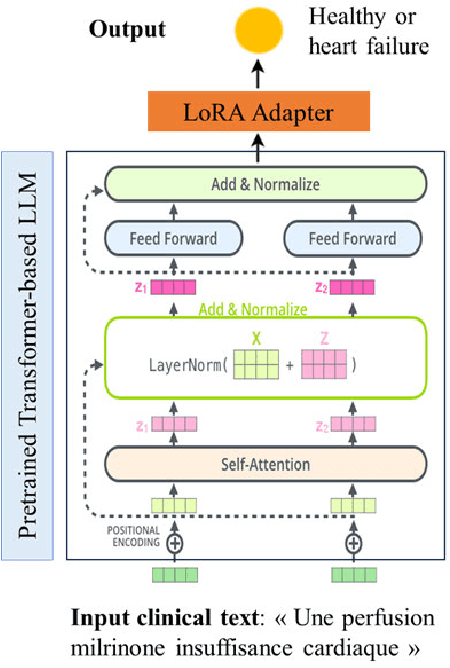

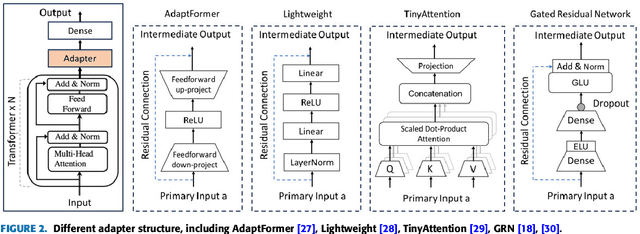
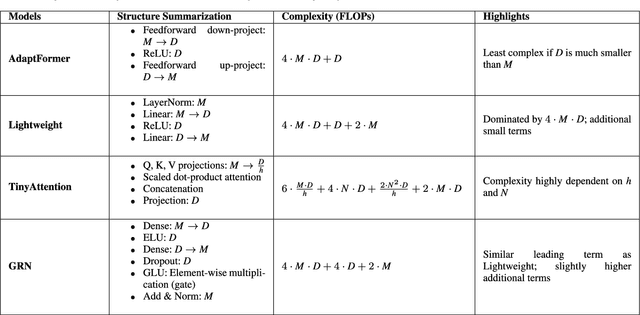
Abstract:Fine-tuning Large Language Models (LLMs) for clinical Natural Language Processing (NLP) poses significant challenges due to the domain gap and limited data availability. This study investigates the effectiveness of various adapter techniques, equivalent to Low-Rank Adaptation (LoRA), for fine-tuning LLMs in a resource-constrained hospital environment. We experimented with four structures-Adapter, Lightweight, TinyAttention, and Gated Residual Network (GRN)-as final layers for clinical notes classification. We fine-tuned biomedical pre-trained models, including CamemBERT-bio, AliBERT, and DrBERT, alongside two Transformer-based models. Our extensive experimental results indicate that i) employing adapter structures does not yield significant improvements in fine-tuning biomedical pre-trained LLMs, and ii) simpler Transformer-based models, trained from scratch, perform better under resource constraints. Among the adapter structures, GRN demonstrated superior performance with accuracy, precision, recall, and an F1 score of 0.88. Moreover, the total training time for LLMs exceeded 1000 hours, compared to under 6 hours for simpler transformer-based models, highlighting that LLMs are more suitable for environments with extensive computational resources and larger datasets. Consequently, this study demonstrates that simpler Transformer-based models can be effectively trained from scratch, providing a viable solution for clinical NLP tasks in low-resource environments with limited data availability. By identifying the GRN as the most effective adapter structure, we offer a practical approach to enhance clinical note classification without requiring extensive computational resources.
An Experimental Study of C-Band Channel Model in Integrated LEO Satellite and Terrestrial Systems
May 21, 2024Abstract:This paper studies the channel model for the integrated satellite-terrestrial networks operating at C-band under deployment in dense urban and rural areas. Particularly, the interference channel from the low-earth-orbit (LEO) satellite to the dense urban area is analyzed carefully under the impact of the environment's characteristics, i.e., the building density, building height, and the elevation angle. Subsequently, the experimental results show the strong relationships between these characteristics and the channel gain loss. Especially, the functions of channel gain loss are obtained by utilizing the model-fitting approach that can be used as the basis for studying future works of integration of satellite and terrestrial networks (ISTNs).
User-Centric Beam Selection and Precoding Design for Coordinated Multiple-Satellite Systems
Mar 13, 2024Abstract:This paper introduces a joint optimization framework for user-centric beam selection and linear precoding (LP) design in a coordinated multiple-satellite (CoMSat) system, employing a Digital-Fourier-Transform-based (DFT) beamforming (BF) technique. Regarding serving users at their target SINRs and minimizing the total transmit power, the scheme aims to efficiently determine satellites for users to associate with and activate the best cluster of beams together with optimizing LP for every satellite-to-user transmission. These technical objectives are first framed as a complex mixed-integer programming (MIP) challenge. To tackle this, we reformulate it into a joint cluster association and LP design problem. Then, by theoretically analyzing the duality relationship between downlink and uplink transmissions, we develop an efficient iterative method to identify the optimal solution. Additionally, a simpler duality approach for rapid beam selection and LP design is presented for comparison purposes. Simulation results underscore the effectiveness of our proposed schemes across various settings.
 Add to Chrome
Add to Chrome Add to Firefox
Add to Firefox Add to Edge
Add to Edge